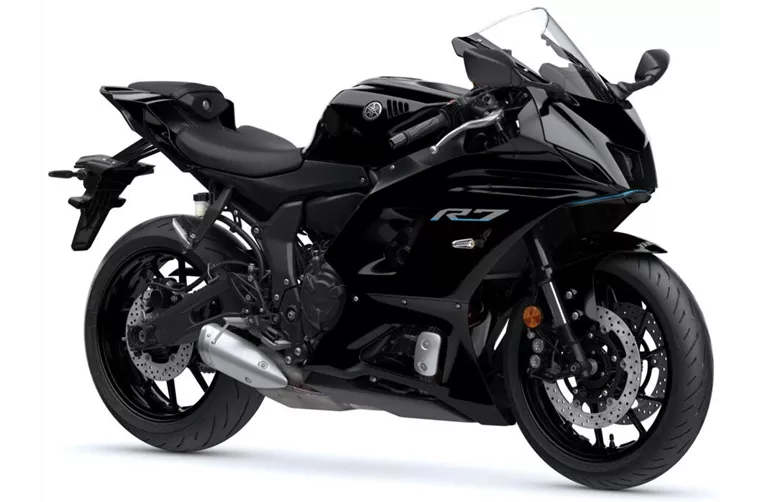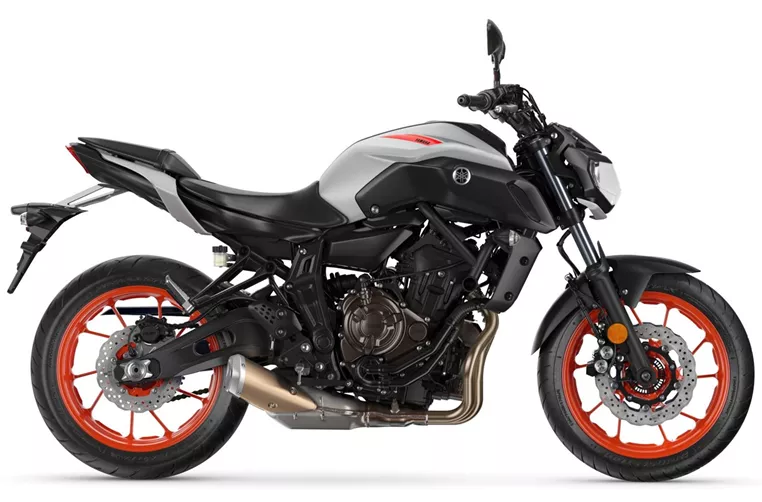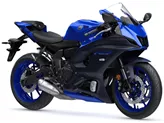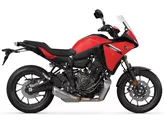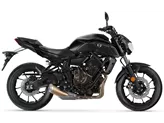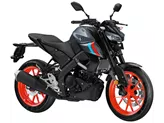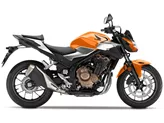Yamaha R7 2021 vs. Yamaha MT-07 2020
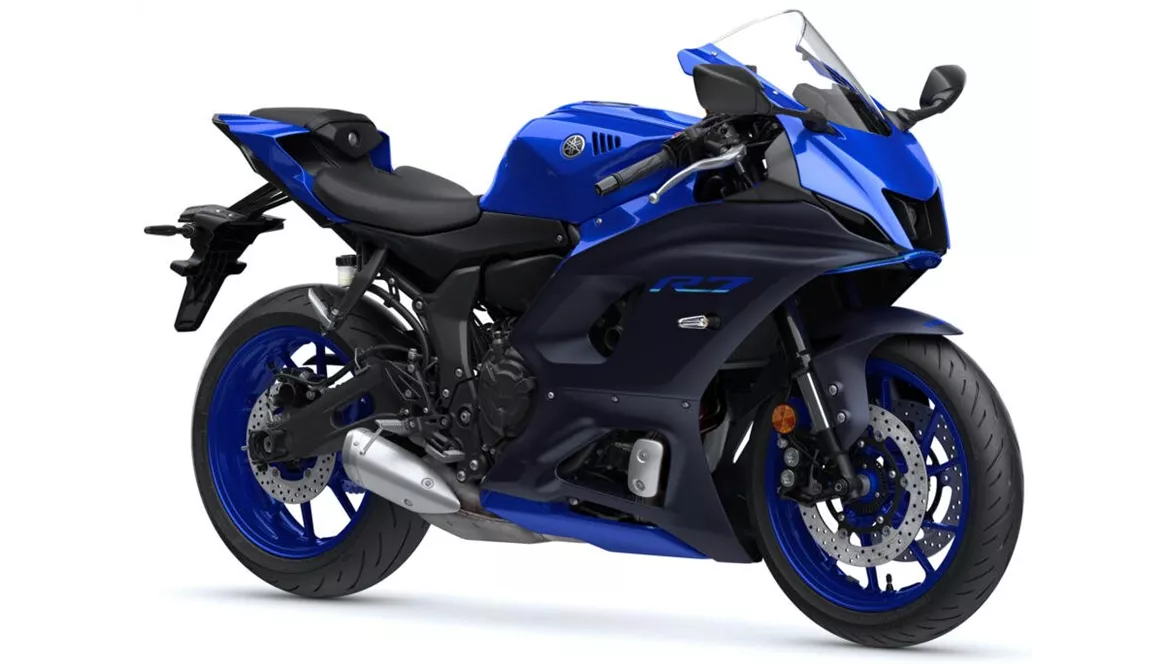
Yamaha R7 2021
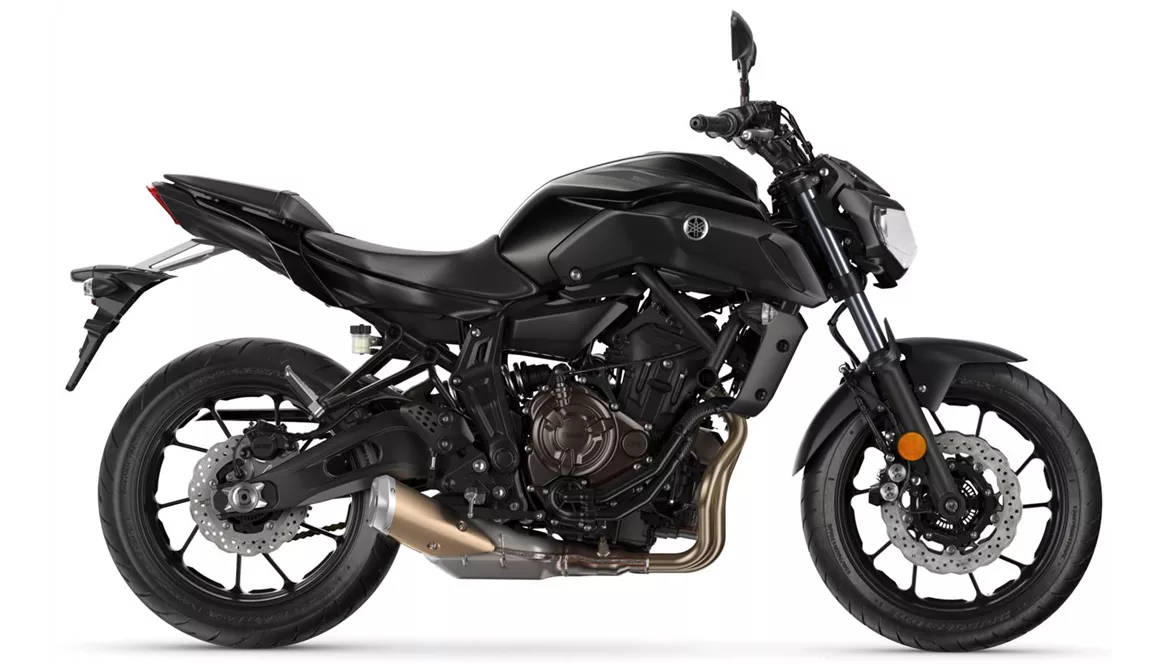
Yamaha MT-07 2020
Overview - Yamaha R7 2021 vs Yamaha MT-07 2020
The Yamaha R7 2021 and the Yamaha MT-07 2020 are both impressive motorcycles from Yamaha, each with their own unique features and strengths.
Starting with the technical specifications, both models have the same engine type, bore, stroke, compression ratio, cylinders, valves per cylinder, valves, cooling system, and displacement. This means that they have similar power and performance capabilities.
In terms of engine power, the Yamaha R7 2021 offers 73.4 HP, while the Yamaha MT-07 2020 offers 75 HP. The difference in power is minimal, with the MT-07 having a slightly higher horsepower.
When it comes to torque, the Yamaha R7 2021 provides 67 Nm, while the Yamaha MT-07 2020 offers 68 Nm. Again, the difference is minimal, with the MT-07 having a slightly higher torque.
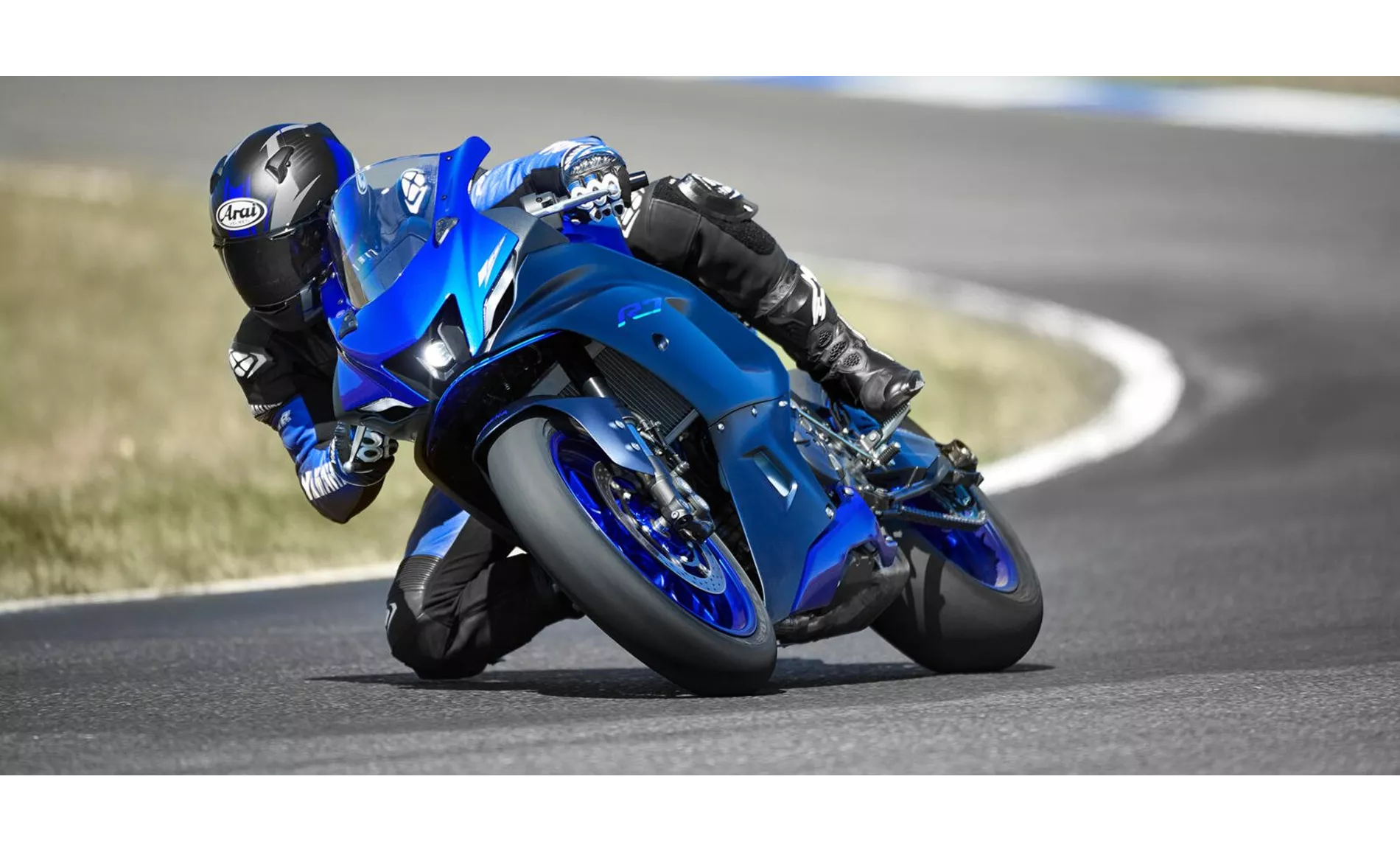
Yamaha R7 2021
Both models feature a steel frame and double disk front brakes, ensuring stability and reliable stopping power. They also have the same front and rear tire dimensions, with a width of 120 mm and a diameter of 17 inches.
In terms of suspension, the Yamaha R7 2021 is equipped with an Upside-Down telescopic fork, while the Yamaha MT-07 2020 has a telescopic fork. The Upside-Down fork on the R7 provides better handling and stability, especially during aggressive riding.
The wheelbase of the Yamaha R7 2021 is slightly shorter at 1395 mm, compared to the 1400 mm wheelbase of the Yamaha MT-07 2020. This difference may result in slightly different handling characteristics, with the R7 potentially being more nimble and responsive.
In terms of weight, the Yamaha R7 2021 has a kerb weight of 188 kg with ABS, while the Yamaha MT-07 2020 has a kerb weight of 182 kg with ABS. The MT-07 is slightly lighter, which may contribute to its easy-to-ride nature.
Both models have a fuel tank capacity of 13 liters for the R7 and 14 liters for the MT-07, providing a decent range for long rides.
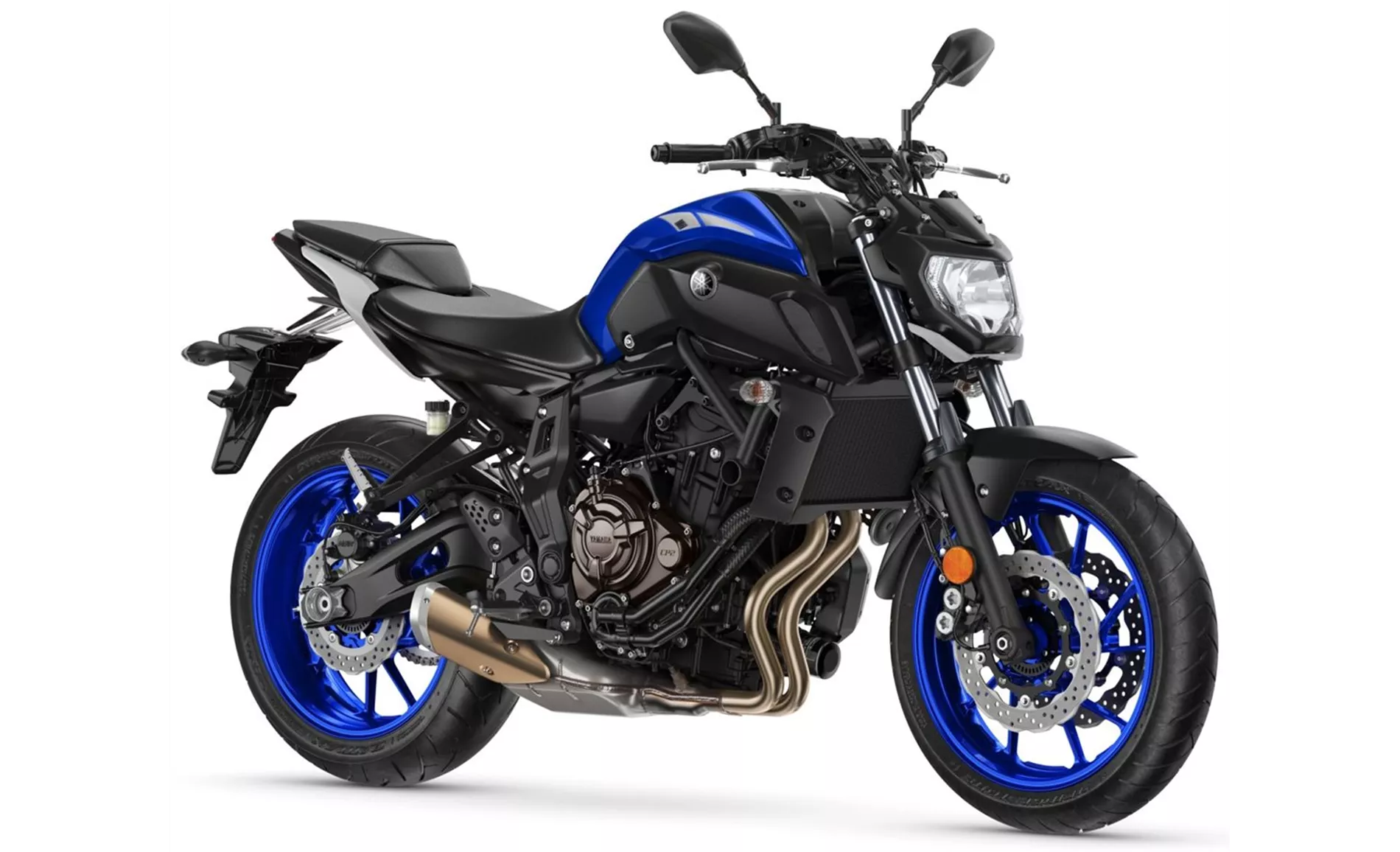
Yamaha MT-07 2020
Moving on to the strengths of each model, the Yamaha R7 2021 stands out for its high-torque CP2 engine, sporty riding position, suspension set-up, standard tires, and being a good entry-level trackday bike. These features make it a great choice for riders looking for a sporty and capable motorcycle.
On the other hand, the Yamaha MT-07 2020 excels in its high-torque two-cylinder engine, well-done chassis set-up, easy-to-ride nature, pleasant seating position, large selection of accessories, and a good price-performance ratio. These strengths make it a versatile and practical choice for riders of all levels.
As for weaknesses, the Yamaha R7 2021 is mentioned to lack a quickshifter as standard, which would have been a nice addition for smoother gear shifts. On the other hand, the Yamaha MT-07 2020 is criticized for its optics and fittings looking a bit dull and the controls on the handlebars being perceived as cheap.
In conclusion, both the Yamaha R7 2021 and the Yamaha MT-07 2020 are impressive motorcycles with their own unique features and strengths. The R7 is a sporty track-oriented bike, while the MT-07 is a versatile and practical naked bike. Riders can choose based on their preferences and intended use.
Technical Specifications Yamaha R7 2021 compared to Yamaha MT-07 2020
Pros and Cons in comparison
Pros and Cons in comparison
Yamaha R7 2021
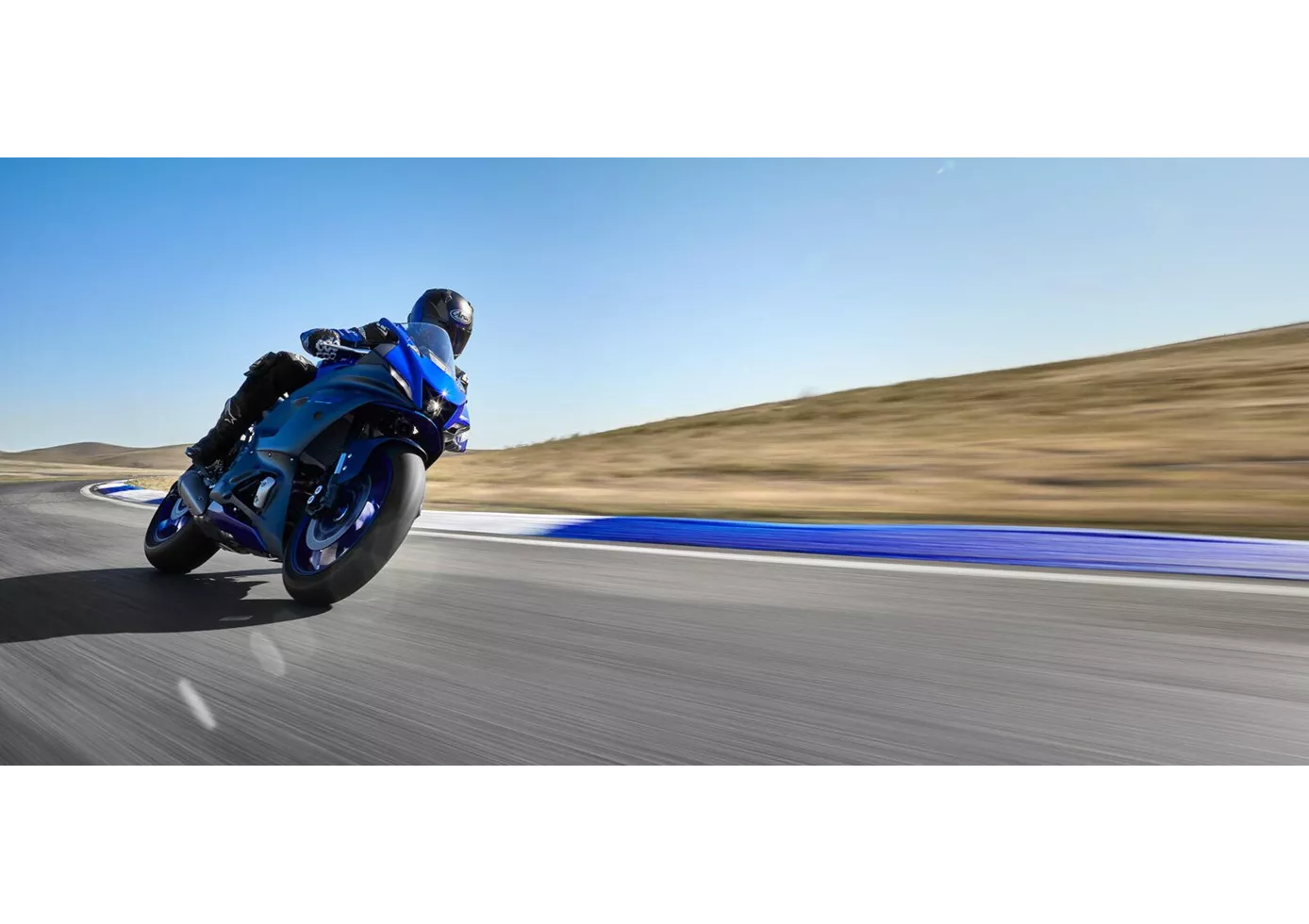
Despite the rather idiosyncratic combination of the sensible 73.4 hp mid-range power unit and the extremely aggressive, sporty look, the R7 is by no means a sheep in wolf's clothing. The performance, which is somewhere between the R3 and the R6, turned out to be much stronger in practice than the pure values on paper would suggest, and in terms of geometry, chassis, brakes and tyres, Yamaha's engineers have really done their homework. On top of that, the Yamaha R7 has all the qualities to have a lot of fun out-of-the-box on a compact race track like the Pannoniaring, for example, even without a big investment. But of course it feels better on the country road, and that's where it belongs in the first place, in our opinion. In view of the overall package, the purchase price is more than fairly priced - so it's not a problem that the quickshifter is not included and has to be purchased as an option.
Yamaha MT-07 2020
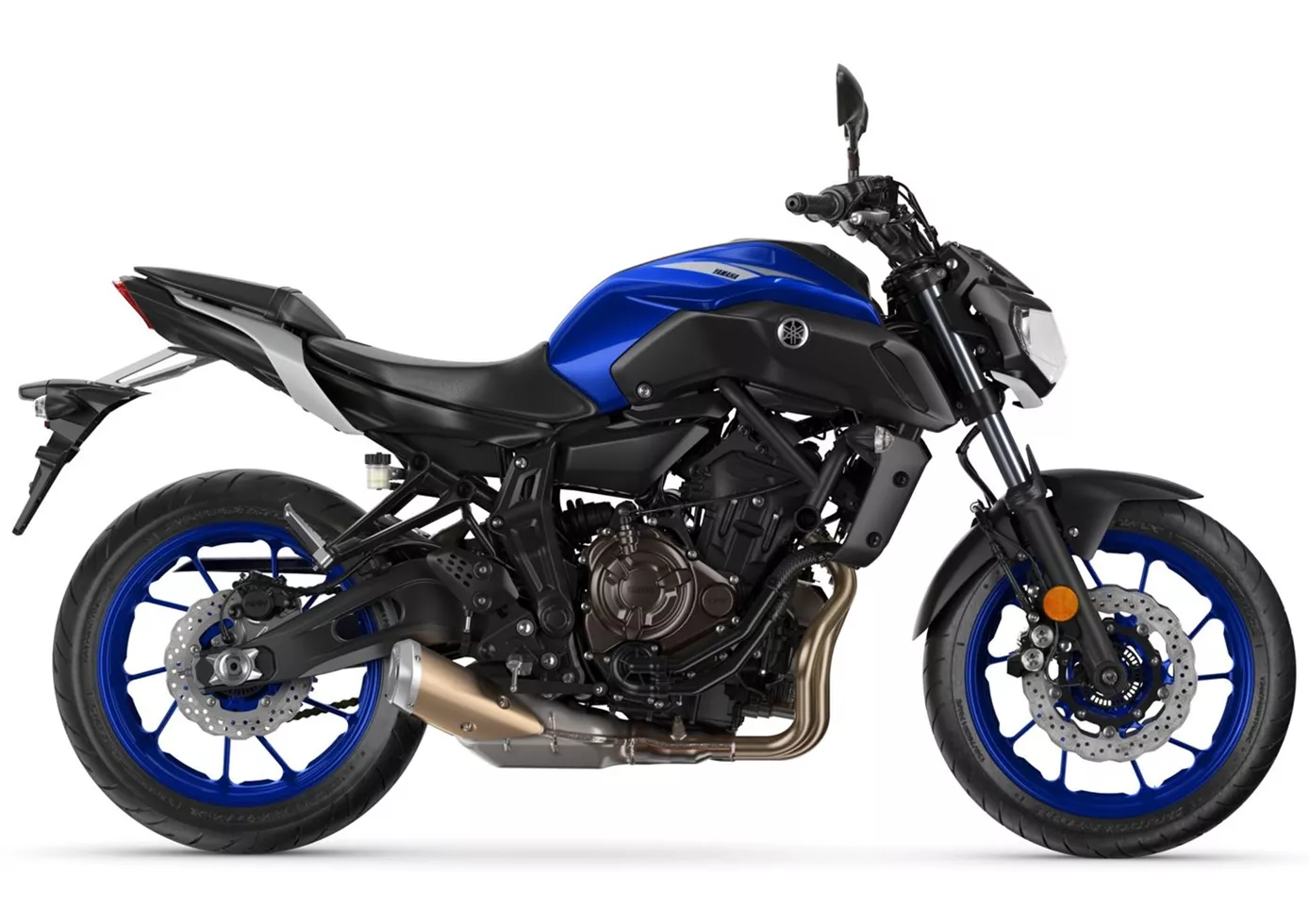
The MT-07 is a wonderful fun machine that is extremely sporty to ride. The brakes pack a punch and the engine is currently by far the most agile powerplant in this class - and perhaps even above. The light handling fits in perfectly and the chassis makes the understandable compromise between comfort and sport - reminding us that the affordable MT-07 should also have a lot to offer beginners. Only the design with halogen headlights and conventional forks is rather old-fashioned.
Price Comparison Avarage Market Price Yamaha R7 vs Yamaha MT-07
There are a few key differences between a Yamaha R7 2021 and a Yamaha MT-07 2020. It takes less time to sell a Yamaha MT-07 with 69 days compared to 161 days for the Yamaha R7. Since model year 2021 1000PS.de editors have written 9 reviews for the Yamaha R7 and 69 reviews for the Yamaha MT-07 since model year 2013. The first review for the Yamaha R7 was published on 5/18/2021 and now has more than 92,800 views. This compares to more than 12,600 views for the first review on Yamaha MT-07 published on 11/4/2013.
